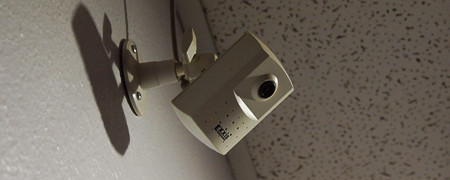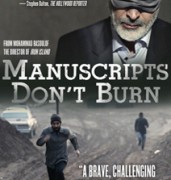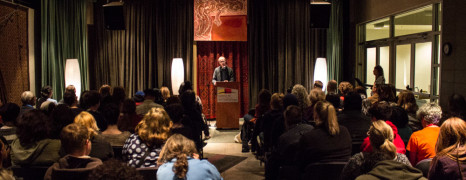Twilight Sparkle and the gang have come to SFUAD! In addition to its myriad other clubs and activities, SFUAD is now playing host to its first ever Brony Club. A bizarre cultural phenomenon that has spawned its own documentary, a Brony is the given name to an adult/young adult male fan of the popular children’s show “My Little Pony: Friendship is Magic.” According to posters around campus, the SFUAD Brony Club’s aim is to “give students a chance to express themselves in a non-judging environment,” as well as enjoy activities such as “creating art, showing off fan works and of course watching new episodes of the show.” The SFUAD Brony Club is the brainchild of Jack Getschman, an 18-year-old freshman film major. “I wanted to start the club because I’m a big fan myself, and I felt it was kind of hard to express myself because I do make some fan works and I can’t really express them to people. So I thought, well, other people probably have this problem too, and it’s hard to express your creative works with people who aren’t fans. So I thought, make the club, get to meet Bronies and I get to make some friends and I can really allow them to express themselves in a non-judging environment.” Getschman says he first saw the show back in 2012, but didn’t consider himself a Brony until a friend recently showed him the documentary “Bronies: The Extremely Unexpected Adult Fans of My Little Pony.” “I was nervous the first time (I saw MLP) because if someone sees a boy or a grown man watching the show, they’re gonna judge or think the worst.” So far, three people have signed up for the club and the on-campus reaction has been relatively positive, although Getschman says he has heard some people “talk about Bronies in not a good light” and that several of his posters have been torn down. One of the new members, Owen Peterson, a 29-year-old SFCC film student who lives in the SFUAD dorms, was excited by the club’s potential to enhance SFUAD’s “inclusive environment” status. “I like the Brony fandom because they are very progressive in moving society forward by eliminating stereotypes for grown men who like children’s entertainment. I myself like Pokemon, Power Rangers and Batman, among other kids shows. We live in an ever-changing world and Bronies are bringing the world closer to being a better place.” Both Getschman and Peterson acknowledge that their status as Bronies may be negatively perceived, but neither feels judged or ridiculed on campus. “I don’t mind (people judging,) but I’d prefer not to go all out and like, shout out on campus ‘Hey, I’m a Brony!’ or anything. I guess I would prefer not to, but I can take it,” says Getschman. Peterson agrees that he doesn’t feel judged “by anyone here on campus. I’m a little nervous about one or two people, but as long as I’ve got my friends here at SFUAD who like MLP, I shouldn’t be afraid of anything anyone says or does.” Administration approval for the club went through Director of Campus and Residential Life John Rodriguez. “I was kind of surprised, but I had seen an episode of “Bob’s Burgers,” which had a Brony Club and I thought it was hilarious. However, I think Jack’s reasons for starting the club were legitimate enough to approve the creation and it also brings much needed diversity to the SFUAD clubs and organizations.” Rodriguez also expressed the hope that “this club will resonate with our SFUAD student body. Again, it’s something fresh and new and is something that our students grew up with, watching “My Little Pony”, so it’s kind of fun to relive those childhood memories as a young adult as a creative outlet.” As with many fandoms, Getschman and Peterson both had characters from the show with whom they most...
Happy Halloween!
posted by Humberto Loeza
Halloween is here (almost) and the campus is ready (almost). A few shots from Halloween...
Surveying Surveillance
posted by Jonathan Hargraves
A second incident involving a female student encountering an unknown male in a dormitory bathroom has steeled the resolve for enhanced campus surveillance. At the start of the 2015 fall semester, the campus will be monitored and recorded 24/7 by nearly 50 security cameras, according to Director of Facilities and Security Peter Romero. The new cameras are part of a two-phase plan, which Romero said was conceived last summer in response to the recent addition of the Higher Learning Center, and a marked increase in the student population. “I think this is a positive step to continue security improvements on campus for [everyone],” Romero said. Though campus surveillance has been a source of contention at some universities, students at Santa Fe University of Art and Design seem to be the new camera plan’s greatest champions. “Things have to change around here,” Jordyn Aquino said, “the safety of my peers is very important to me.” Aquino is a musical theater major and one of the camera plan’s more active proponents. After learning about the sexual assault that took place Oct. 2 in a dormitory bathroom and hallway, she posted a Facebook status on the Student Life page in which she solicited help to draft a petition for more security cameras. “It scares me and angers me that a sexual predator may be roaming our campus because we did not have the proper evidence to convict him,” Aquino said. The only suspect arrested in the Oct. 2 assault was released from police custody, and allowed back on campus, according to a previous Jackalope Magazine article. The second incident occurred on Oct. 30. According to a campus-wide email from Senior Director of Student Life Laura Nunnelly, “a female student contacted campus security to report an incident involving an unknown male in the female bathroom of King Hall.” According to the email, campus security was searching for the suspect, and the Santa Fe Police were contacted. No further information was available at the time this article was published. Familiar with the predation of catcalling while traversing campus property, Aquino said she would like to see cameras both indoors and outdoors on every entrance, exit, public space and courtyard, including “the hallways [and] stairways of dorms.” “I understand that this is controversial,” she said, acknowledging privacy concerns, “but [students] need to really consider … that there are victims living on our campus who are in a perpetual state of fear and discomfort because their attacker is still at large.” To some extent, photo major Forrest Soper agrees with Aquino. “I know that due to the recent incident on campus, many individuals feel unsafe and are pushing for the installation of new cameras,” he said, “and I have absolutely no problem with that.” However, Soper also said he has never liked the idea of surveillance, even if only used for the purpose of verifying criminal activity. In fact, when asked in an informal Jackalope-sponsored Facebook survey if he was for, against or undecided in regard to the new camera plan, Soper was the only student out 58 respondents to choose against—49 were for, and eight were undecided. “I have never felt that security cameras or surveillance systems made me feel safe.” Because he lives off campus and was not affected by the assault, Soper said he does not want to speak out against what other students may perceive as a means to reassurance and safety, and therefore, supports their desire for additional surveillance. David Roth, although he did not respond to the survey, also is an opponent of Aquino’s effort and the camera plan. When commenting on her petition post, he said cameras monitoring dormitory hallways would be an “invasion of privacy,” and that security should be more diverse and even-handed in their tactics when combating campus crime, e.g., offering self-defense classes, investigatory follow-ups on theft complaints and more student-ID checking. Though, agreeing with Aquino on one point, Roth said, “I do...
Coming Attractions
posted by Charlotte Martinez
Coming Attractions at The Screen Oct. 31 – Nov. 6 Showcasing the best in classical, independent and foreign cinema, The Screen cinematheque at Santa Fe University of Art and Design presents new releases, special cinema events and performances all day every day! See what critics have to say about the latest screenings, watch a trailer, then visit The Screen for a unique movie-going experience. The Blue Room France – 2014 – 1 hour 16 minutes Based on the Novel by Georges Simenon “Every revelation registers in the gifted Amalric’s gaze: infinitesimal physical mutations, emotional detonations.” —Sheri Linden of Los Angeles Times “One of most exciting things about The Blue Room is that it celebrates the radical fragmentation of Alain Resnais’s 1963 film Muriel — a nostalgic blast for modernists, reminding us that, by and large, they don’t cut them like they used to.” —Jonathan Romney of Film Comment Magazine Manuscripts Don’t Burn Iran – 2013 – 2 hours 5 minutes Winner of Cannes Film Festival’s 2013 Best Director “Demands to be seen as widely as possible.” – Jonathan Romney of Screen International “The most important moviegoing experience of the year.” -Eric Cohn of Indiewire New York Film Critics Series Presents Elsa and Fred USA – 2014 – 1 hour 34 minutes Starring Shirley Maclaine and Christopher Plummer One Night Only, Nov. 4, 7 p.m. “Elsa and Fred” is both a movie about love and a love letter to movies.” Jeannette Catsoulis of The New York Times Awake: The LIfe of Yogananda US – 2014 – 1 hour 27 minutes The Story of Yoga’s Journey to the West “The film tapped into Yogananda’s humanity in a way that was profoundly moving and inspiring to me.” —Ram Dass “A beautifully crafted film and a powerful story about a spiritual genius.” —Russell Simmons...
The Poet’s Guide to Journalism
posted by Jonathan Hargraves
On Oct. 14, Tom Sleigh, a noted poet, read excerpts from his most recent collection of poems — “Station Zed” — to a crowded O’Shaughnessy Performance Space at Santa Fe University of Art and Design. The collection is part of a new body of work by Sleigh inspired by his recent travels to the Middle East. In addition to the poems, Sleigh journalized the experience in an essay titled “The Deeds” in which Sleigh casts himself as a poet in journalist’s clothing, seeking passage to the Lebanese city of Qana in order to learn the Palestinian side of the 2006 Israeli-Palestinian conflict. “I loved doing it,” Sleigh says, “I didn’t think about myself…all doubts immediately vanished… [and] there was no detail too small that wasn’t suddenly charged with interest.” “The Deeds” was published in the Virginia Quarterly Review in 2008, and selected for inclusion in the 2009 edition of the “Best American Travel Writing” compendium. However, before this acclaim Sleigh says he had no desire to go to Lebanon — adding, as a joke, that he barely knew where to find it on a globe. “What I didn’t know about Lebanon could fill many books.” In 2007, Munir Akash invited Sleigh to Lebanon. Akash is the founder of the Trans-Arab Unity Foundation, and Sleigh’s invite was part of an initiative by the group to bring artists and writers to the Middle East. Sleigh says Akash wanted him to assess and write about the conditions of Palestinian refugees, “particularly in the aftermath of the 2006 war.” Originally, the trip was postponed for three months, Sleigh says, because of backlash from the murder of “a very prominent Christian Maronite politician” — Plerre Gemayel. According to the trans-Arab news network Al-Jazeera, the cabinet minister was gunned down in his car during a traffic jam in a Christian neighborhood — almost immediately his death was followed with “angry protests” by his supporters. Though unsettling for Sleigh, an assassination turned out to be the least of his worries. “As soon as we landed,” he says, “a huge car bomb went off.” In Lebanon, Sleigh says car bombs are so frequent that while watching Abbott and Costello’s “Meet the Mummy” in a Beirut hotel room, he saw commercials for personal bomb-detecting devices — an experience upon which he elaborates in “The Deeds.” During his visit, the violence only escalated. Sleigh says he experienced some of the worst internal violence since the 15 years of civil war that took place in Lebanon between 1975 and 1990. “People were being blown up all the time…and I was scared.” In spite of his fear, or maybe as a result of it, Sleigh became “acutely aware” of the world around him, and was “totally interested in what everybody was wearing, what they were thinking [and] what they were saying.” The experience, at times, was even “exhilarating.” Because most of the fighting in 2006 had occurred in the southern part of Lebanon, Sleigh says he decided to go there to see what, if anything, had been preserved. “But did I know what the hell I was doing?” Sleigh asks, adding, “no.” Never before had Sleigh attempted journalism. Sleigh met Chris Merrill — another poet whom he describes as an “old-school journalist who covered the Bosnian war.” Merrill showed Sleigh the journalistic ropes, and through technical mimesis Sleigh acquired the information-gathering skills that would be required of him to complete “The Deeds.” “It was monkey see, monkey do,” he says, but “poetry taught me how to compress information, and to describe accurately what I see.” In gathering information for his essay, Sleigh says he “did lots of interviews,” and not once throughout the process did he use a tape recorder, which he believes acts as a barrier between the journalist and the subject when the two are attempting to establish trust. Also, a subject — in the absence of a tape...






 Jackalope Magazine is the student magazine of Santa Fe University of Art and Design. Building on the interdisciplinary nature of our education, we aim to showcase the talent of our university and character of our city.
Jackalope Magazine is the student magazine of Santa Fe University of Art and Design. Building on the interdisciplinary nature of our education, we aim to showcase the talent of our university and character of our city.
Recent Comments